REMEMBRANCE
OF
THE FIRST WORLD WAR
POPPIES AT THE TOWER
NOVEMBER 2014
-oOo-
PAGE THREE: HISTORY OF THE POPPY
THE POPPIES OF FLANDERS FIELDS
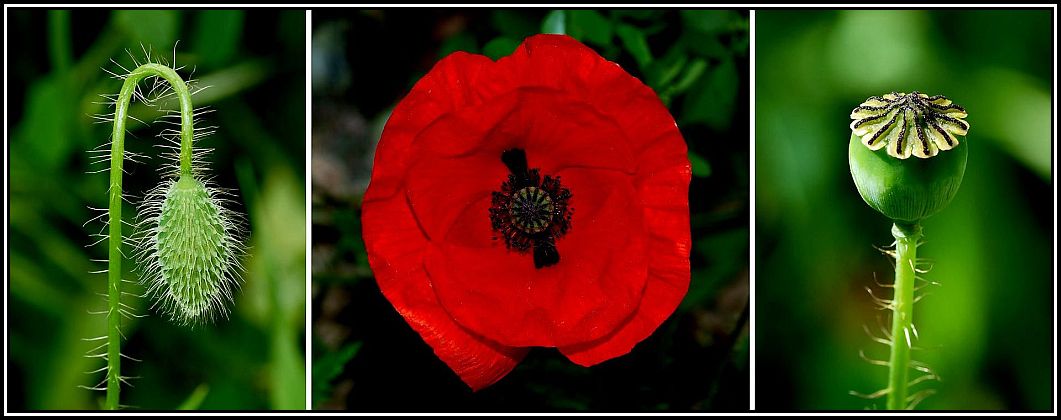 From Left to Right, Three Stages of the Poppy (Papaver rhoeas), as bud, bloom and fruit (capsule)
From Left to Right, Three Stages of the Poppy (Papaver rhoeas), as bud, bloom and fruit (capsule)
This photograph is the work of Alvesgaspar
The Poppy is known by a number of names: firstly, there is the Species Name, which is the scientific name used in the classification of the Species (i.e. Taxonomy), Papaver rhoeas, and is known and used by Scientists and Horticulturalists. The flower is also known as the Red Poppy, Corn Poppy, Field Poppy, Flanders Poppy, Red Weed and Coquelicot. The Poppy is an agricultural weed and has become the Symbol of Remembrance of the fallen members of the military services and also of civilians killed during the Wars.
The Poppy is an annual, which blooms between about May and August. Its seeds are dispersed by the wind and can remain dormant in the ground until disturbed in early spring. A seed will then germinate and produce its flower. The Poppy may often appear in clusters at the edges of fields where grain is grown.
-oOo-
Around the battle areas in the region of Ypres in Belgian (West) Flanders from the spring of 1915 until 1918, clusters of the Red Poppy were found to bloom. Similarly, on the battlefields of the Gallipoli Pennisular, where The Australian & New Zealand Army Corps (ANZAC) and British Forces of The Mediterranean Expeditionary Force (MEF) fought forces of the Ottoman Empire and its allies. the Red Poppy was also seen to flower.
-oOo-
Lieutenant Colonel John McCrae (1872-1918) was an officer and a physician in a Canadian Artillery Brigade and stationed near Ypres in May of 1915. Seemingly, the sight of such Poppies that were blooming there at this time is said to have inspired him in the writing of a poem following the death of a friend during the Second Battle of Ypres. The poem, which came to be known as In Flanders Fields was first published anonymously in the 8th November, 1915, edition of Punch, but was later attributed to him in the index at the end of the year. He died of Pneumonia with extensive Pneumococcus Meningitis at the age of 45 on the 28th January, 1918 and is buried in the Wimereux Cemetery in the Pas-de-Calais where the head stones are lain flat due to the sandy soil.
-oOo-
IN FLANDERS FIELDS
In Flanders fields the poppies blow
Between the crosses, row on row,
That mark our place; and in the sky
The larks, still bravely singing, fly
Scarce heard amid the guns below.
We are the Dead. Short days ago
We lived, felt dawn, saw sunset glow,
Loved and were loved, and now we lie
In Flanders fields.
Take up our quarrel with the foe:
To you from failing hands we throw
The torch; be yours to hold it high.
If ye break faith with us who die
We shall not sleep, though poppies grow
In Flanders fields.
-oOo-
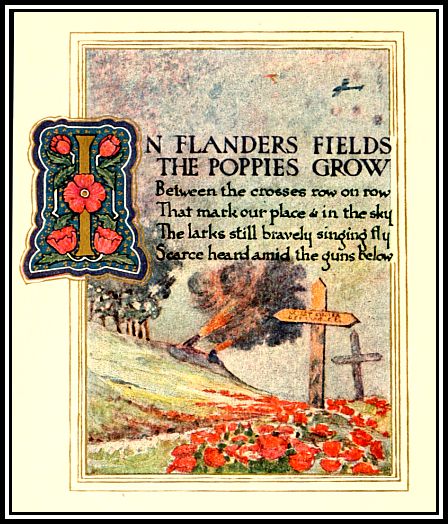 Illustrated by Ernest Clegg; published in Mount Vernon, New York by William Edwin Rudge (1921)
Illustrated by Ernest Clegg; published in Mount Vernon, New York by William Edwin Rudge (1921)
-oOo-
THE POPPY AS A MODERN DAY SYMBOL OF REMEMBRANCE
Since 1921 in the U.K., the Poppy, Papaver rhoeas, has been associated with commemorating the fallen members of the Armed Services who lost their lives during the First World War and later conflicts.
But how did this Modern Day Symbol of Remembrance become adopted?
It was the American Professor and humanitarian, Miss Moina Belle Michael (1869-1944), who first proposed the use of the Poppy as a modern day symbol of Remembrance. When the U.S. entered the First World War, she went to New York City to help train YWCA volunteers for work in Europe.
-oOo-
WE SHALL KEEP THE FAITH
Miss Michael was apparently inspired by the poem, In Flanders Fields by Lt. Col. John McCrae (see above), to write and publish in 1918, a response also in poem form, entitled We Shall Keep the Faith in 1918:
Oh! you who sleep in Flanders Fields,
Sleep sweet – to rise anew!
We caught the torch you threw
And holding high, we keep the Faith
With All who died.
We cherish, too, the poppy red
That grows on fields where valor led;
It seems to signal to the skies
That blood of heroes never dies,
But lends a lustre to the red
Of the flower that blooms above the dead
In Flanders Fields.
And now the Torch and Poppy Red
We wear in honor of our dead.
Fear not that ye have died for naught;
We’ll teach the lesson that ye wrought
In Flanders Fields.
-oOo-
Miss Michael vowed to always wear a red poppy as a Symbol of Remembrance for those who served in the First World War.
Once the War came to an end, Miss Michael returned to teaching and taught classes to disabled servicemen. While doing so, she noticed that many of these students were in need of financial and occupational help. In response to their needs, she came up with the idea of selling silk poppies, as a way of raising funds for them. The first sale of the Flanders Fields Memorial Poppy took place on the 9th November, 1918.
In 1921, as a result of her work, the poppy was adopted as a Symbol of Remembrance for War Veterans by the American Legion Auxiliary.
-oOo-
Madame Anna Guérin, a member of the French YMCA Secretariat, was attending a National American Legion convention when she came in contact with Miss Michael who was busy with her campaign to have the Poppy adopted as a Symbol of Remembrance for War Veterans.
When Madame Guérin returned to France, she founded the American and French Children’s League through which she organised women, children and Veterans to make artificial poppies of cloth. It was her hope that these poppies would be sold and the proceeds used to help fund the restoration of war-torn regions of France. As a result, a huge number of French-made artificial poppies were sold in the U.S. between 1920 and 1924.
Madame Guérin went on to introduce the idea of the Memorial Poppy to countries that had fought with the Allies during The Great War. In 1921, she visited or sent representatives to the U.S., the U.K., Australia, Canada and New Zealand and this led to:
- The Great War Veterans Association of Canada, founded in 1917, adopting the Poppy as its national flower of Remembrance in July 1921;
- A resolution being passed in Australia that from 11th November, 1921, the Memorial Poppy was to be worn on Armistice Day (11th November) in Australia. Later, wreaths of Poppies began to be laid at the foot of Memorials each ANZAC Day, the 25th April; and
- The adoption of the Memorial Poppy by The New Zealand Returned Soldiers’ Association (NZRSA), founded in 1916, and with the first Poppy Day sale being held on the 24th April, 1922 just prior to ANZAC Day.
Madame Guérin visits to the U.K. included one where she visited Field Marshal Earl Douglas Haig (1861-1928), who had founded The Royal British Legion in 1921 and became its President. She persuaded him to adopt the Flanders Poppy as an emblem for The Legion, which was formalized in the autumn of 1921. Nine million poppies were sold on the 11th November of that year. This first Poppy Appeal raised over £106,000 and was used to help Veterans from the War with employment, housing and other needs.
-oOo-
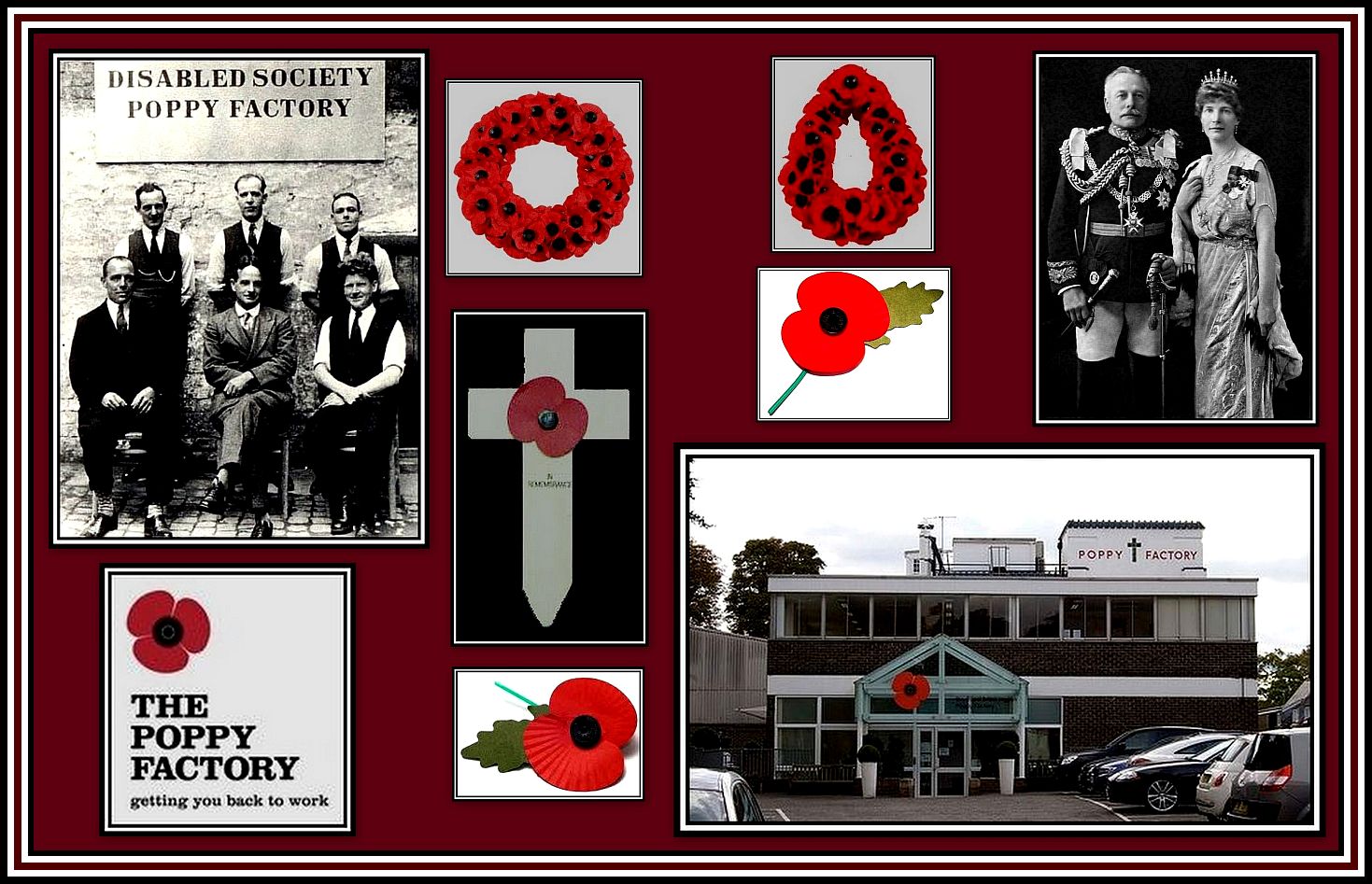 Top Left: Major George Howson (centre); Top Right: Earl & Countess Haig; Bottom Right: The Poppy Factory, Richmond
Top Left: Major George Howson (centre); Top Right: Earl & Countess Haig; Bottom Right: The Poppy Factory, Richmond
In 1922, Major George Howson (1886-1936) set up the Poppy Factory in the U.K. to employ disabled ex-Servicemen and which today, together with the Legion’s warehouse in Aylesford, produces over thirty-six million artificial poppies each year.
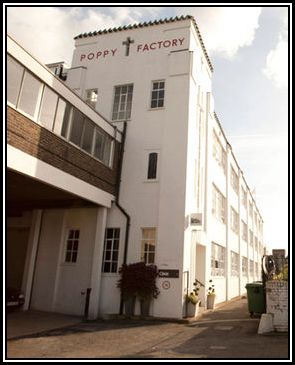 Click here to learn more about The Richmond Poppy Factory
Click here to learn more about The Richmond Poppy Factory
The Earl Haig Fund Scotland was founded in 1921 by Field Marshal Earl Douglas Haig and in 1926, his wife, Countess Dorothy Haig (1879-1939), founded the Lady Haig Poppy Factory in Edinburgh, which still raises funds from the sales of five million artificial poppies and wreaths each year and employs ~30 Veterans with disabilities.
Click here to see Remembrance Poppies being made at the Lady Haig Poppy Factory
-oOo-
Since 1922, the Flanders Poppy has been sold each year by The Royal British Legion from mid-October and raises funds in support of the organisation’s charitable works.
-oOo-
At the Royal British Legion Festival of Remembrance held at the Royal Albert Hall each year on the Saturday evening prior to the Remembrance Sunday Ceremony, one million Poppy petals flutter down from the roof and onto the silent troops.
Click here to watch this moving site from 2011
-oOo-
Click here to watch the million Poppy Cascade at the intu Trafford Centre, Manchester to commemorate the centenary of The First World War
——oooOOOooo——
Click here
to read more about
POPPIES AT THE TOWER – PAGE 4
——oooOOOooo——
Click here to GO to the POPPIES AT THE TOWER – PAGE 4
——oooOOOooo——
Click here to RETURN to the POPPIES AT THE TOWER – PAGE 2
——oooOOOooo——
Click here to RETURN to the POPPIES AT THE TOWER – INTRODUCTION
——oooOOOooo——
Click here to RETURN to the TABLE OF CONTENTS
——oooOOOooo——
5 thoughts on “REMEMBRANCE OF THE FIRST WORLD WAR: POPPIES AT THE TOWER, NOVEMBER 2014 – PAGE 3”
Leave a Reply

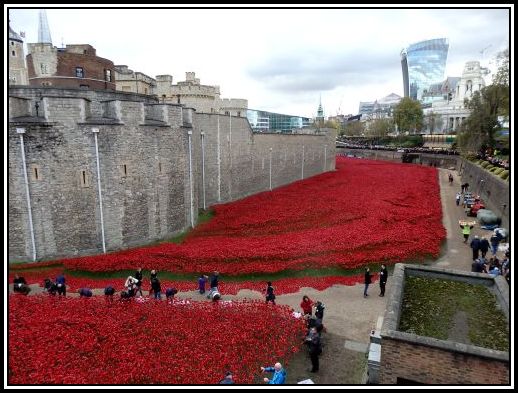

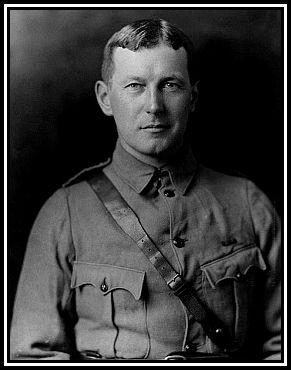
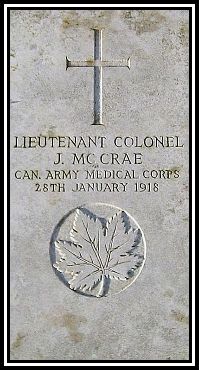
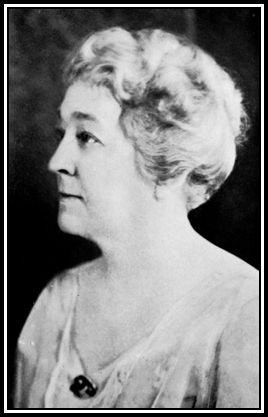
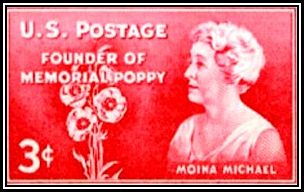

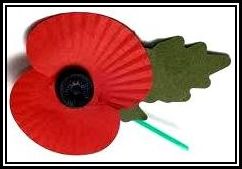
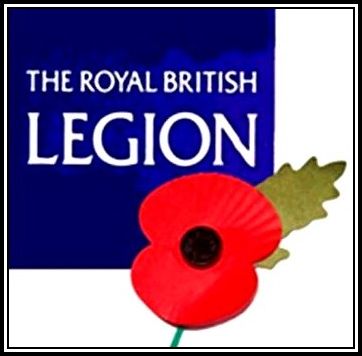
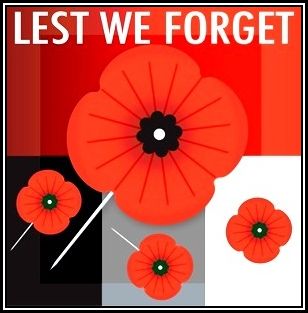
Thank you for the history of the Poppies. The poem ‘In Flanders Fields’ by John McCrea is a favourite of mine.
Unfortunately the above poem has taught politicians nought!
again, a lot of information that we did not know, soon we will be so informed noone will want to chat with us
Thank you for the more in-depth information of John McCrae and that of Professor Moina Belle Michael. Having sold Poppies for 8 years at a Norfolk village… makes your history much more poignant.
Thanks for a very informative account of the remembrance poppy.
The Poppies at the ‘Tower of London’ certainly represent Rivers of Blood. Which is how it must have looked when the Poppies suddenly appeared on the many battlefields. Representing tears and blood of the dead of MANY nationalities. A senseless war.
Let’s not forget the government-of-the-day introduced a law banning begging of ex-service disabled with loss of limbs and blindness from being gassed.